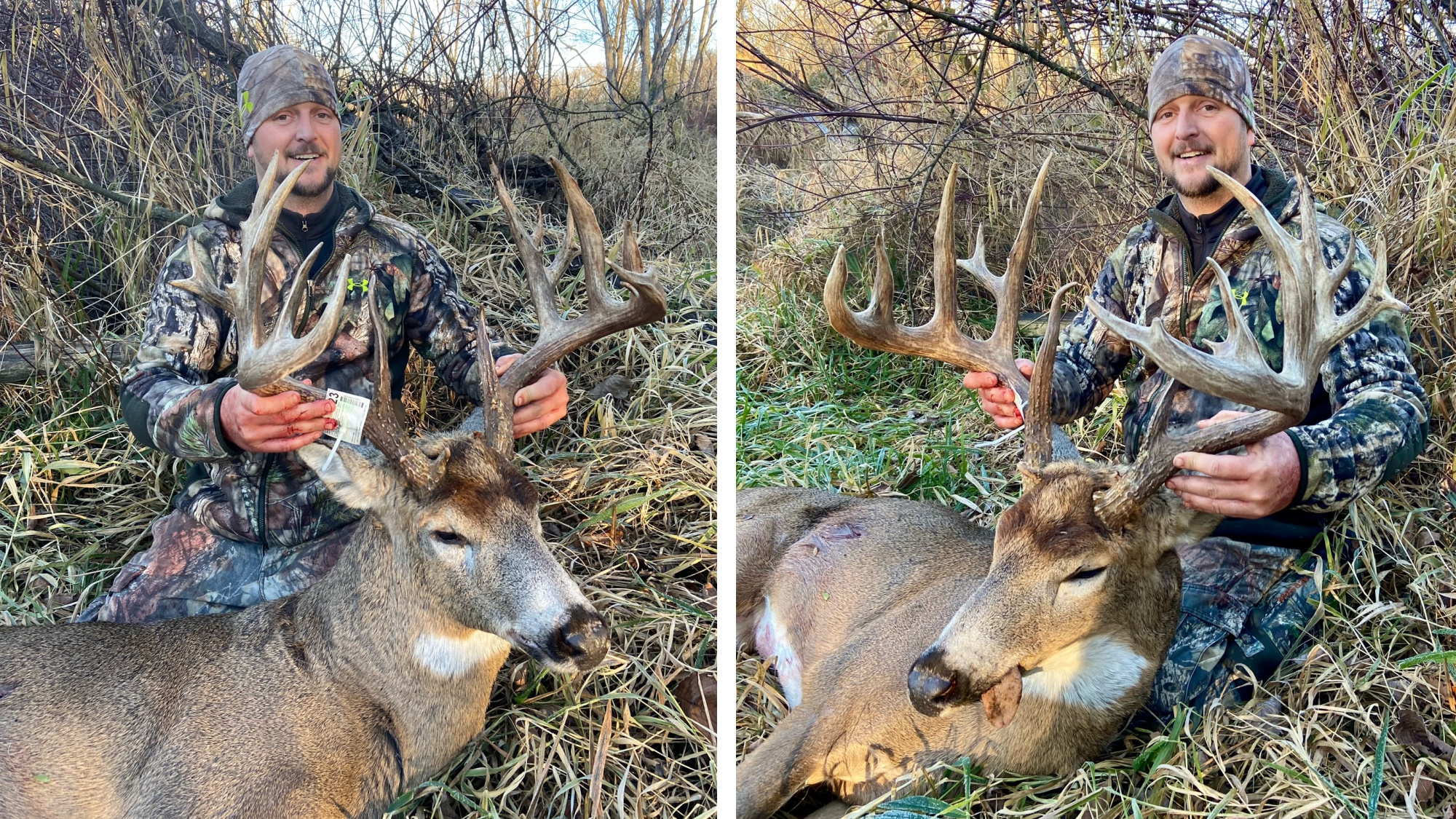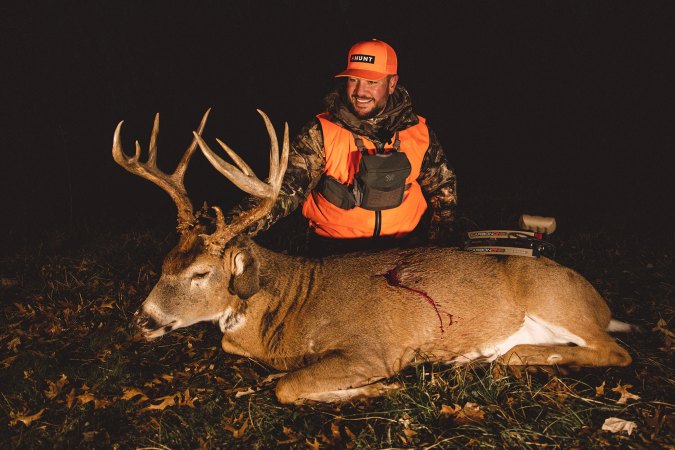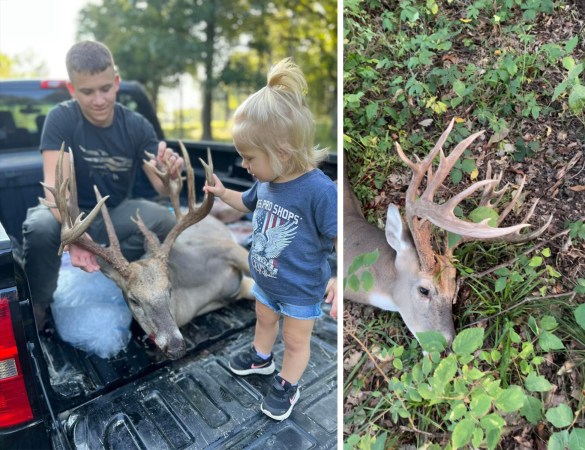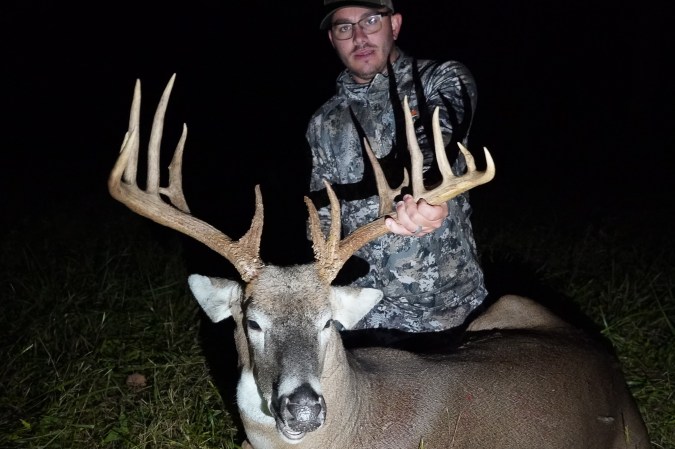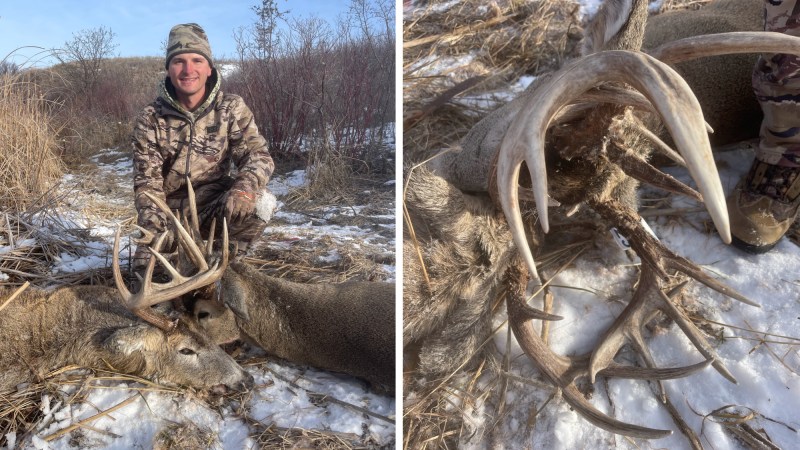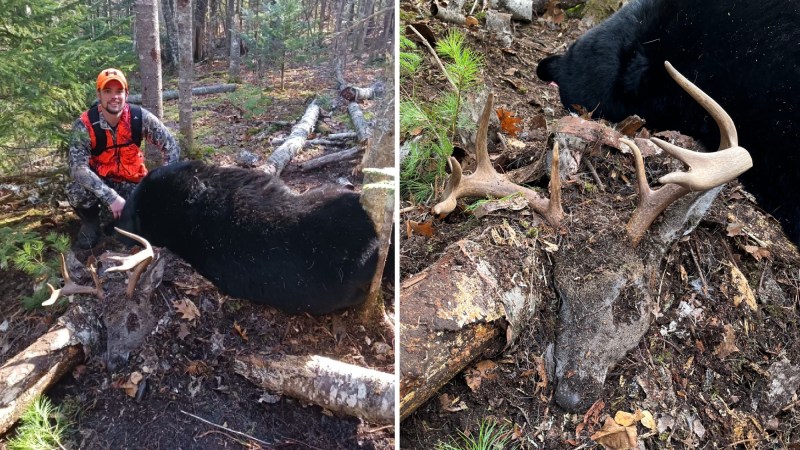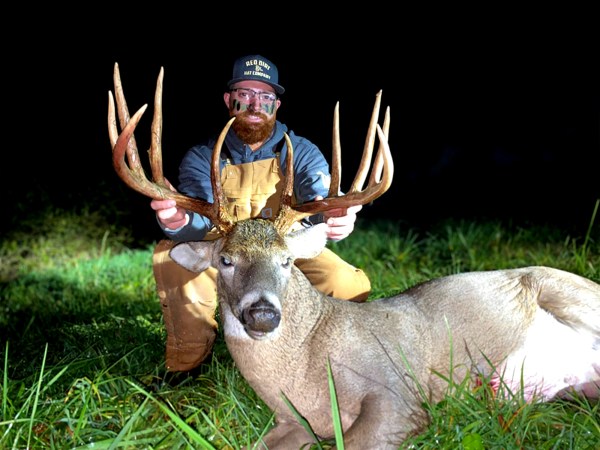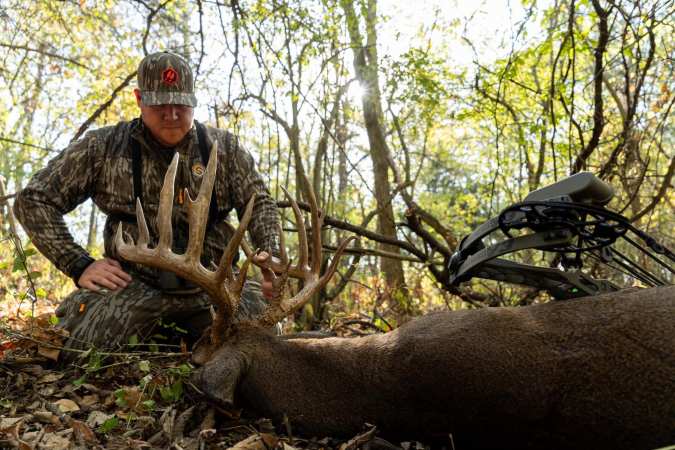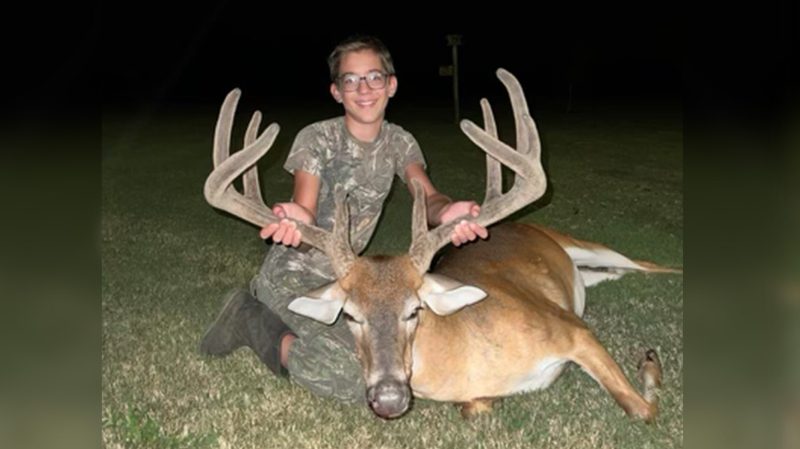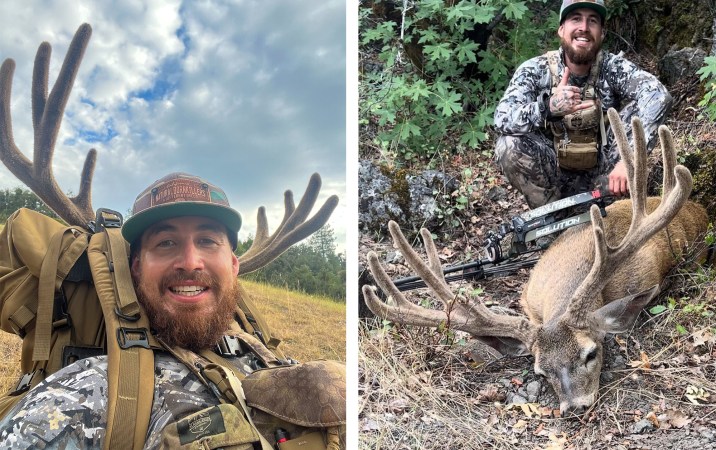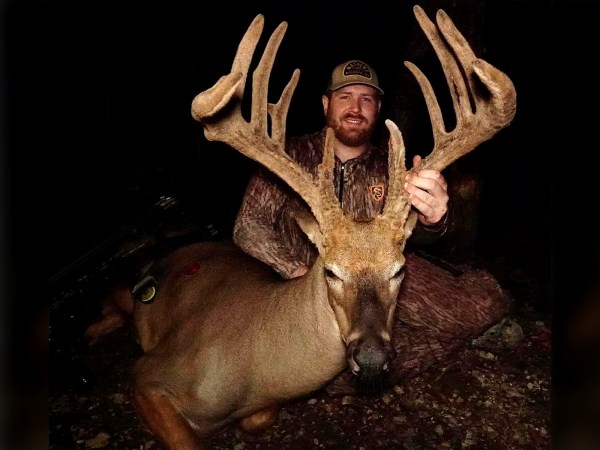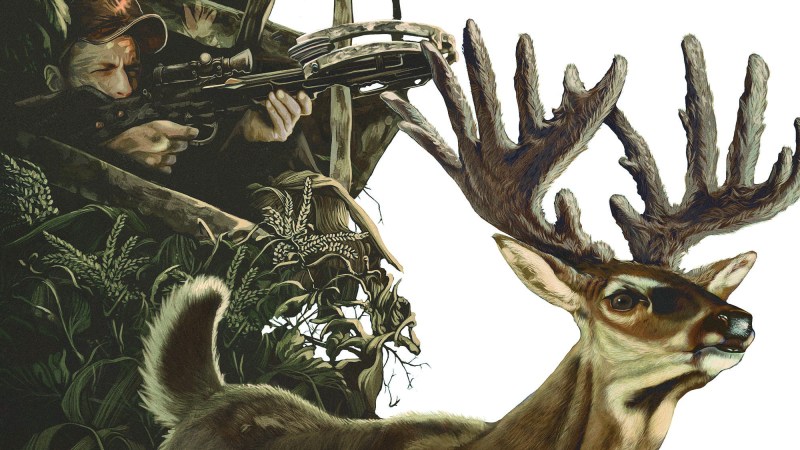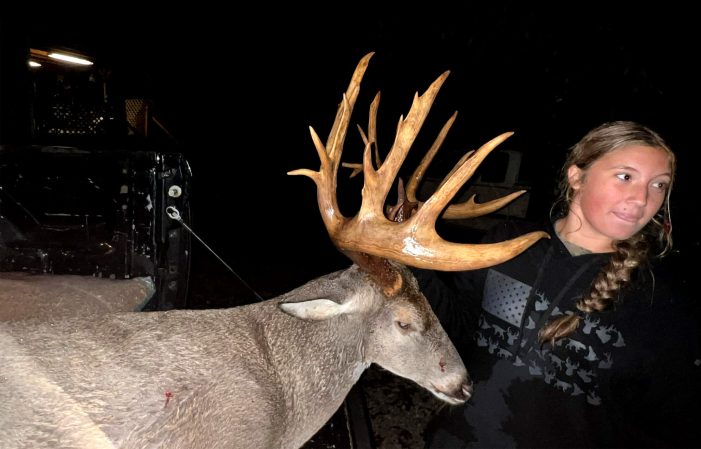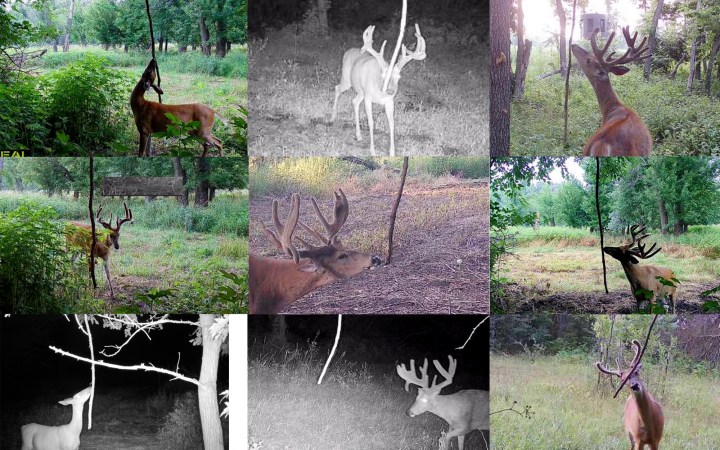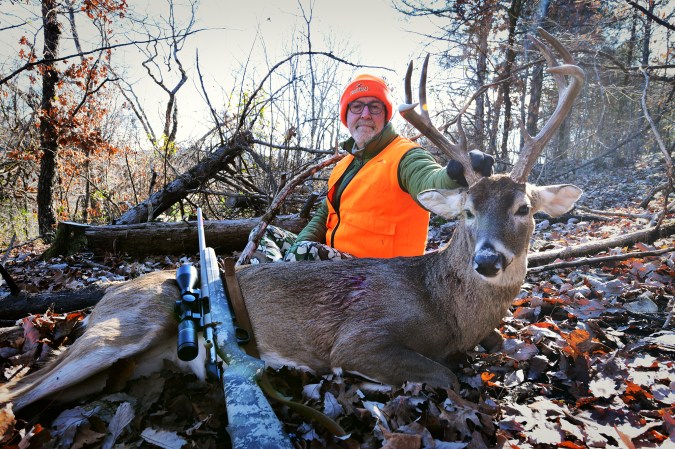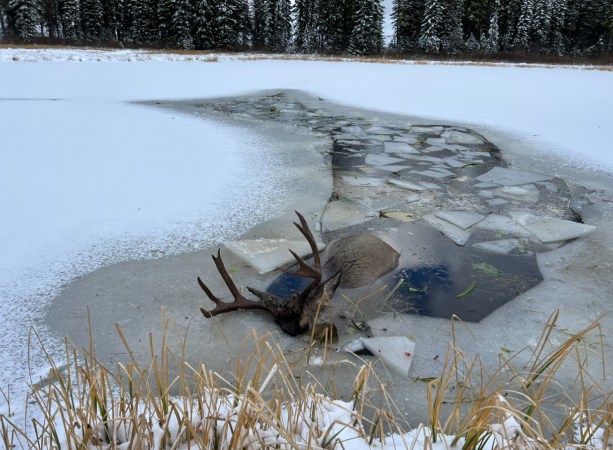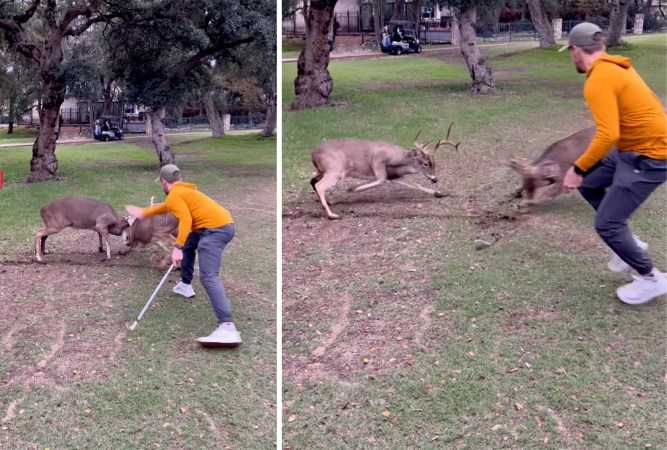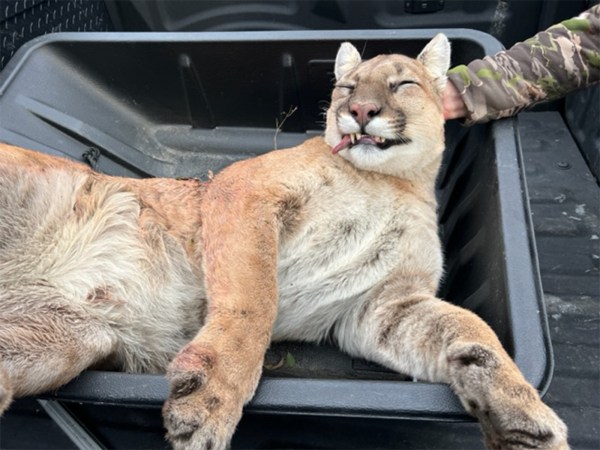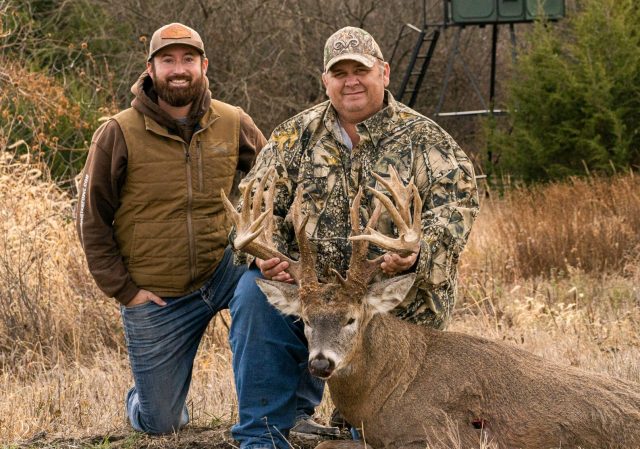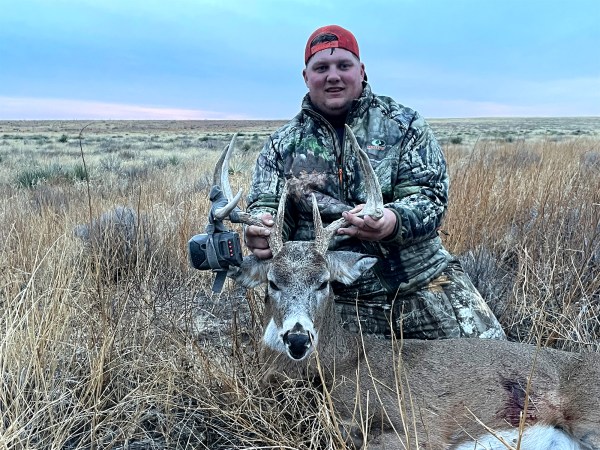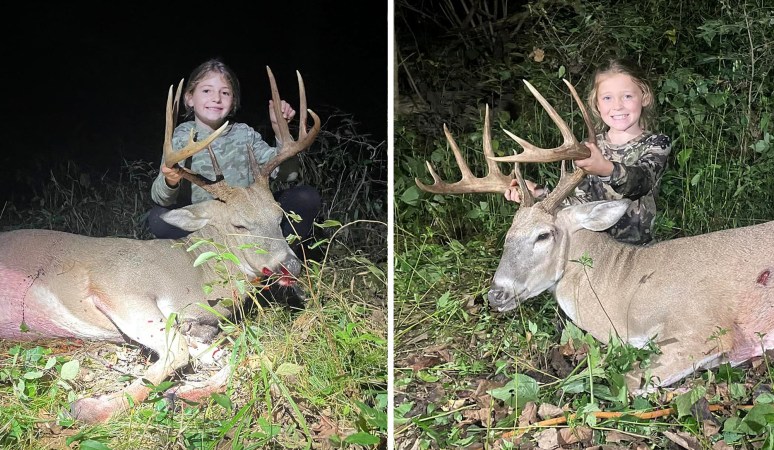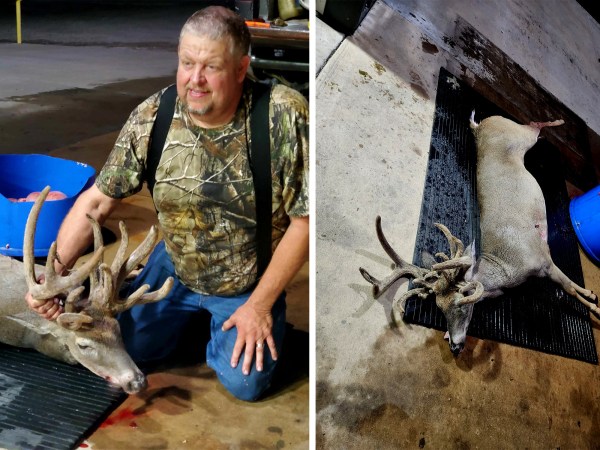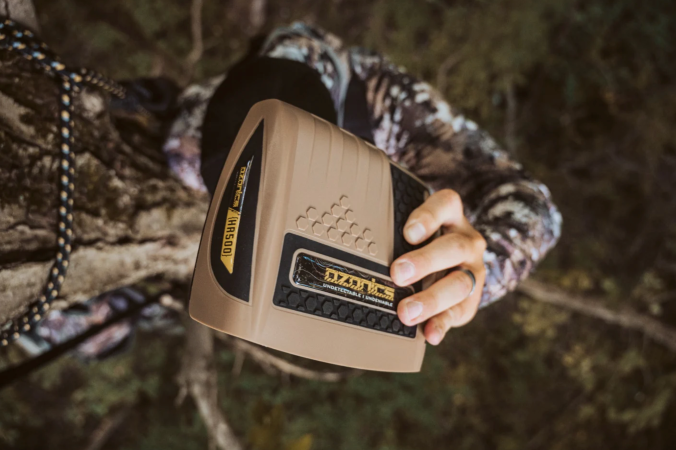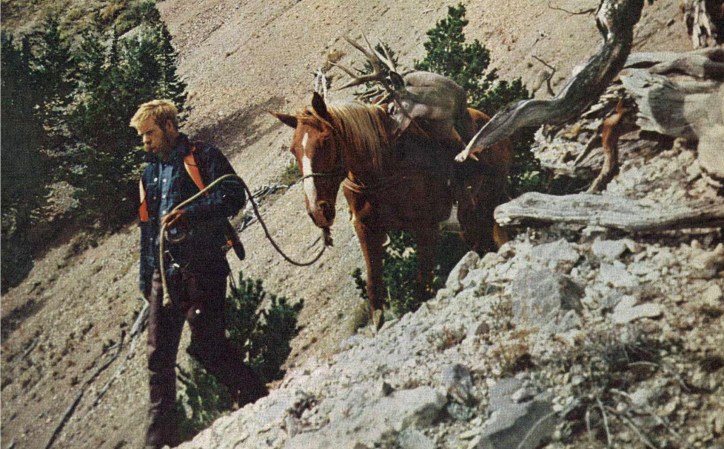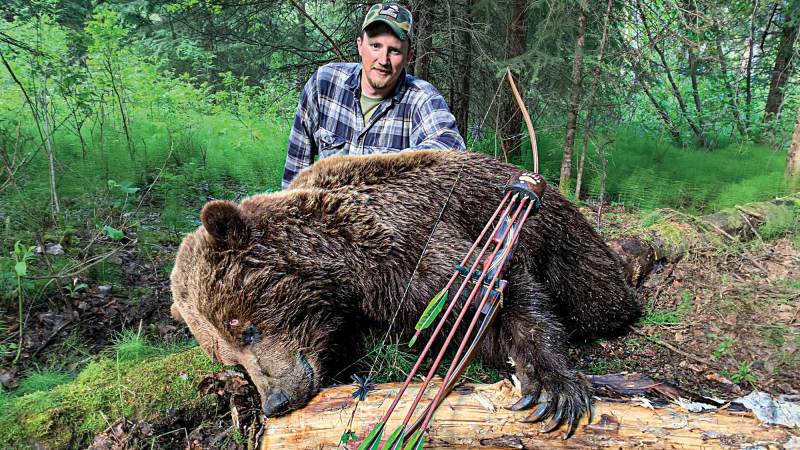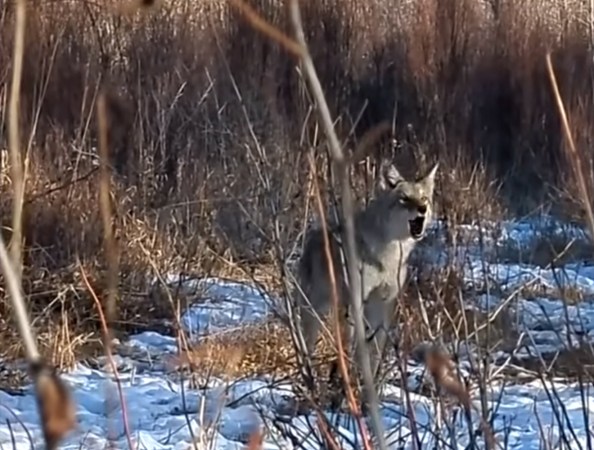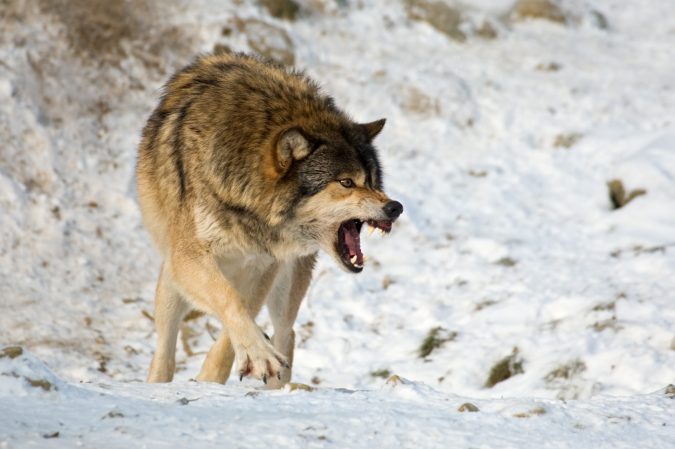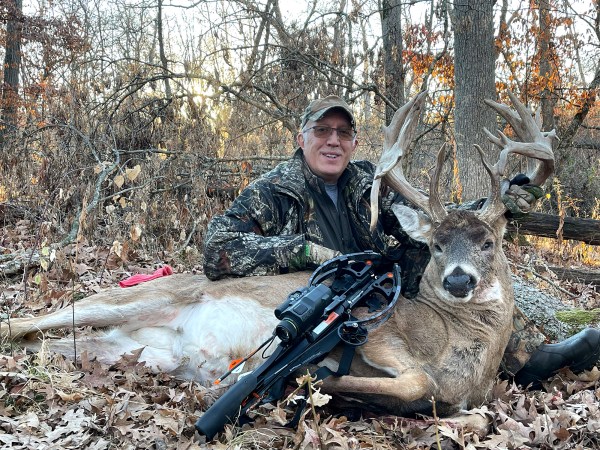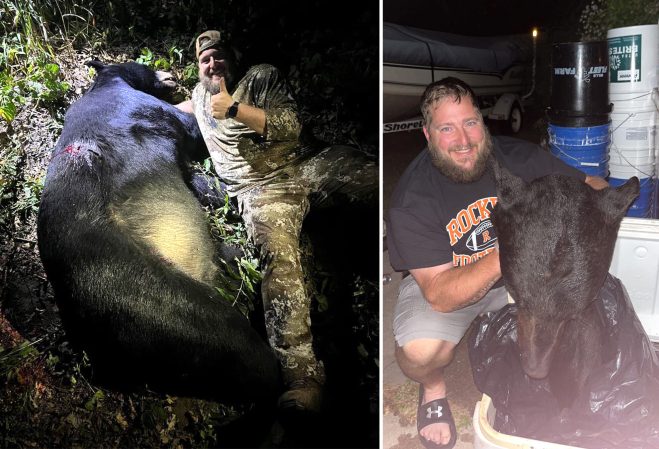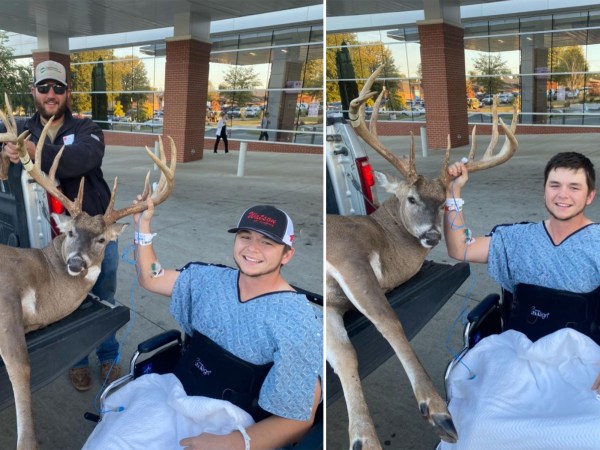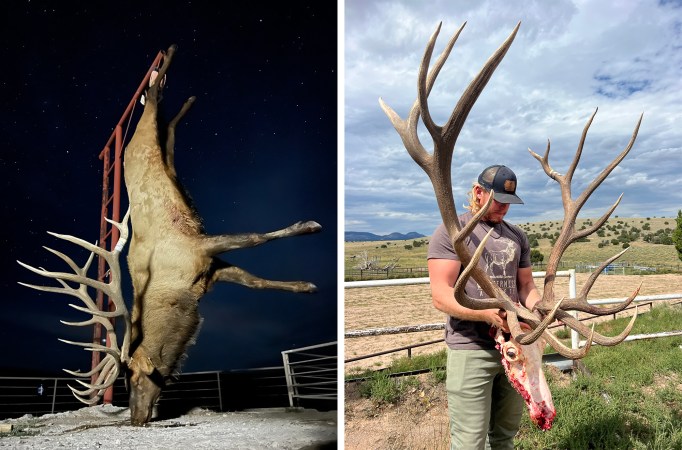Patterning a whitetail who only appears on camera at night can feel like a tall order. Just ask 35-year-old Jeff Ankley, who shot a unique nontypical he nicknamed “Captain Hook” on his land in northern Illinois this fall after only seeing the buck in daylight twice in three years.
Ankley and his wife, Caitlin Munson, saved up and purchased 5 acres of wooded land adjacent to their half-acre home in 2020. At the time, Ankley didn’t realize that the land they’d bought was shaped like an hourglass, surrounded by more suburban areas and creating a small but ideal deer sanctuary. The following hunting season, Ankley set up trail cameras and started getting pictures of decent-sized bucks — including one particularly big nontypical who was almost completely nocturnal.
“He piqued my interest mainly because he had hooks coming off his G2s,” Ankley tells Outdoor Life. “He was a young deer, I estimated him to be about 3.5 years old at that time. He only came around at night, and we would get pictures of him randomly. He showed up once in the daylight that year, and then he completely vanished.”
Ankley didn’t see evidence of him again until 2022, when a trail camera captured a daylight photo of the buck on Oct. 31.
“Then he vanished again, and we didn’t see him again for the season,” Ankley says. “Then, going into this deer season, we put our cameras out mid-August and didn’t get any pictures of him until the second week of November. At that point I didn’t even know if he was still around. We were close to some forest reserves that were getting culled, so I didn’t know if he got [killed by another hunter] or moved on and found a new domain of his own. But after I got that picture I was determined.”
On Nov. 18, Ankley set up in his stand on the south side of his property. Last light was creeping up on him. Around 4:40 p.m., Ankley heard sticks breaking behind his tree.
“I turned around, grabbed my bow, and sure enough I see him coming down a thicket line somewhat in the open,” Ankley says. “There were two different target bucks we’ve been chasing this year. I knew it was either one of those bucks based on tine length.”
The buck closed to 23 yards. Ankley predicted the deer would hop on a trail that ran parallel to Ankley’s stand.
“I had one shooting lane on [that trail], maybe two feet in diameter,” he says. “I knew if I stopped him in that spot I was going to get a shot. So when he got about three steps in there I drew my bow back. He stopped just past the opening, far enough to where I couldn’t really see his head, but I knew he was a shooter. I took the shot. He reared up and kicked, ran out about thirty yards, and stopped out in some marsh grass behind a bunch of brush. I remember thinking to myself, I just killed the biggest deer of my life.”
Ankley waited about 45 minutes and climbed out of the stand to return home. He and Munson eventually went out to pick up a blood trail.
“We found decent blood right off the bat where I’d shot him. As we started tracking the blood trail got thinner, we saw a spot where it looked like he bedded down, so we made the decision after about an hour and a half of tracking him to pull out. I didn’t sleep great that night.”
The pair went back out the next morning right around sunrise to pick up the trail again.
Read Next: Mike Hunsucker on How to Hunt the Most Elusive Old Bucks
“We started where we had left off, and I’d say 30 to 40 yards from there was where we found him. I walked up and was just dumbfounded,” Ankley says. “I couldn’t believe I’d killed this buck I’d been chasing for three years, and I had no idea it was even him. It was a really, really exciting moment for me.”
Ankley took a green score twice and feels confident that Captain Hook will end up a 190-class deer. When he took the buck to get tested for CWD, the biologists aged him at 5.5 years old. Once the 60-day drying period is over, Ankley plans to get the buck shoulder-mounted.

